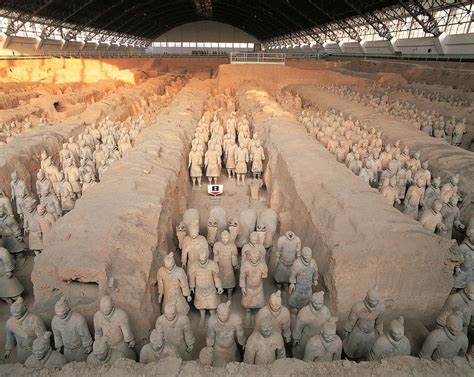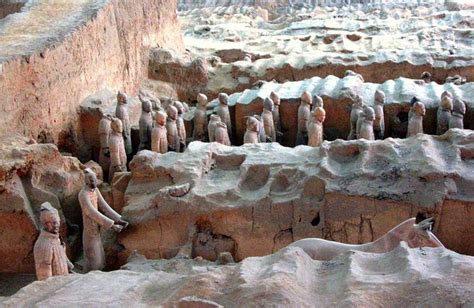why won't china excavate the emperor's tomb Historical records indicate that the emperor, who unified China from 221 BC to 210 BC, consumed mercury in his quest for eternal life. Recent studies in 2020 confirmed . Our mini digger is available at £50 per day and weighs 1.5 tonnes. This is ideal for working with buildings all the gardens and is also perfect for landscape use. It has a slightly larger capacity than our micro digger. Our midi digger is available at £60 per day and weighs 2.5 tonnes.
0 · why china tomb is open
1 · why are china's tomb so invasive
2 · why are china's tomb ruined
3 · china's tomb
4 · china tomb problems
5 · china emperor tomb
6 · china emperor mausoleum
7 · china 1st emperor tomb
Find 56 used Deere 50G mini excavators for sale near you. Browse the most popular brands and models at the best prices on Machinery Pete.
A prime reason behind this hesitancy is that archeologists are concerned about how the excavation might damage the tomb, losing vital historical information. Currently, only invasive. Learn the reasons why the underground palace of the First Qin Emperor remains unexcavated, such as limited technology, deep depth, long time, and environmental risk. Find .
Historical records indicate that the emperor, who unified China from 221 BC to 210 BC, consumed mercury in his quest for eternal life. Recent studies in 2020 confirmed . Death traps and mercury poisoning are just some of the concerns facing archaeologists contemplating excavating Qin Shi Huang's tomb, China's first emperor. In 1974, . The 2,200-year-old burial place of Qin Shi Huang, the ancient emperor who unified China, has not been opened out of fear of dangerous traps and mercury. Scientists have .
Archaeologists are too scared to open up the 2,200-year-old tomb of China's first emperor Qin Shi Huang because they fear it might harbor deadly booby traps. The mausoleum . They have legitimate concerns about exploring the tomb. Archaeologists haven’t dared look inside the tomb of China’s first Emperor. Chances are you’re aware of Qin Shi .
The first Emperor of China, Qin Shi Huang, was buried in a mausoleum with rare artefacts and deadly devices in 210BCE. Learn about the history, legends and challenges of .
The mausoleum of Qin Shi Huang, the first emperor of the Qin dynasty, is a large tomb complex with a pyramid-shaped mound and a necropolis of terracotta soldiers. It is a UNESCO World .Learn about the discovery and excavation of the massive tomb complex of Qin Shi Huangdi, who declared himself the first emperor of China in 221 B.C.E. See the terracotta warriors, the . A prime reason behind this hesitancy is that archeologists are concerned about how the excavation might damage the tomb, losing vital historical information. Currently, only invasive.
Learn the reasons why the underground palace of the First Qin Emperor remains unexcavated, such as limited technology, deep depth, long time, and environmental risk. Find out what is buried inside the mausoleum and how to visit the terracotta warriors pits.
Historical records indicate that the emperor, who unified China from 221 BC to 210 BC, consumed mercury in his quest for eternal life. Recent studies in 2020 confirmed unnaturally high mercury levels within the tomb, aligning with ancient chronicle records. Death traps and mercury poisoning are just some of the concerns facing archaeologists contemplating excavating Qin Shi Huang's tomb, China's first emperor. In 1974, farmers stumbled upon. The 2,200-year-old burial place of Qin Shi Huang, the ancient emperor who unified China, has not been opened out of fear of dangerous traps and mercury. Scientists have proposed using muons, a non-invasive technique, to explore the tomb without damaging it. Archaeologists are too scared to open up the 2,200-year-old tomb of China's first emperor Qin Shi Huang because they fear it might harbor deadly booby traps. The mausoleum of the.
They have legitimate concerns about exploring the tomb. Archaeologists haven’t dared look inside the tomb of China’s first Emperor. Chances are you’re aware of Qin Shi Huang’s final resting place, even if you’ve never heard of him. He was the first person to rule unified China and reigned from 221BC to 210BC.
The first Emperor of China, Qin Shi Huang, was buried in a mausoleum with rare artefacts and deadly devices in 210BCE. Learn about the history, legends and challenges of opening his tomb, which has remained sealed for over 2000 years.The mausoleum of Qin Shi Huang, the first emperor of the Qin dynasty, is a large tomb complex with a pyramid-shaped mound and a necropolis of terracotta soldiers. It is a UNESCO World Heritage Site and a cultural symbol of ancient China.Learn about the discovery and excavation of the massive tomb complex of Qin Shi Huangdi, who declared himself the first emperor of China in 221 B.C.E. See the terracotta warriors, the tumulus, and the underground chambers that reveal his vision of an eternal empire.
A prime reason behind this hesitancy is that archeologists are concerned about how the excavation might damage the tomb, losing vital historical information. Currently, only invasive.
Learn the reasons why the underground palace of the First Qin Emperor remains unexcavated, such as limited technology, deep depth, long time, and environmental risk. Find out what is buried inside the mausoleum and how to visit the terracotta warriors pits.
Historical records indicate that the emperor, who unified China from 221 BC to 210 BC, consumed mercury in his quest for eternal life. Recent studies in 2020 confirmed unnaturally high mercury levels within the tomb, aligning with ancient chronicle records. Death traps and mercury poisoning are just some of the concerns facing archaeologists contemplating excavating Qin Shi Huang's tomb, China's first emperor. In 1974, farmers stumbled upon. The 2,200-year-old burial place of Qin Shi Huang, the ancient emperor who unified China, has not been opened out of fear of dangerous traps and mercury. Scientists have proposed using muons, a non-invasive technique, to explore the tomb without damaging it.

Archaeologists are too scared to open up the 2,200-year-old tomb of China's first emperor Qin Shi Huang because they fear it might harbor deadly booby traps. The mausoleum of the. They have legitimate concerns about exploring the tomb. Archaeologists haven’t dared look inside the tomb of China’s first Emperor. Chances are you’re aware of Qin Shi Huang’s final resting place, even if you’ve never heard of him. He was the first person to rule unified China and reigned from 221BC to 210BC. The first Emperor of China, Qin Shi Huang, was buried in a mausoleum with rare artefacts and deadly devices in 210BCE. Learn about the history, legends and challenges of opening his tomb, which has remained sealed for over 2000 years.
The mausoleum of Qin Shi Huang, the first emperor of the Qin dynasty, is a large tomb complex with a pyramid-shaped mound and a necropolis of terracotta soldiers. It is a UNESCO World Heritage Site and a cultural symbol of ancient China.
why china tomb is open

minneapolis skid steer rental
mtl extreme skid steer brush cutter
Find 57 used Jcb mini excavators for sale near you. Browse the most popular brands and models at the best prices on Machinery Pete.
why won't china excavate the emperor's tomb|china tomb problems